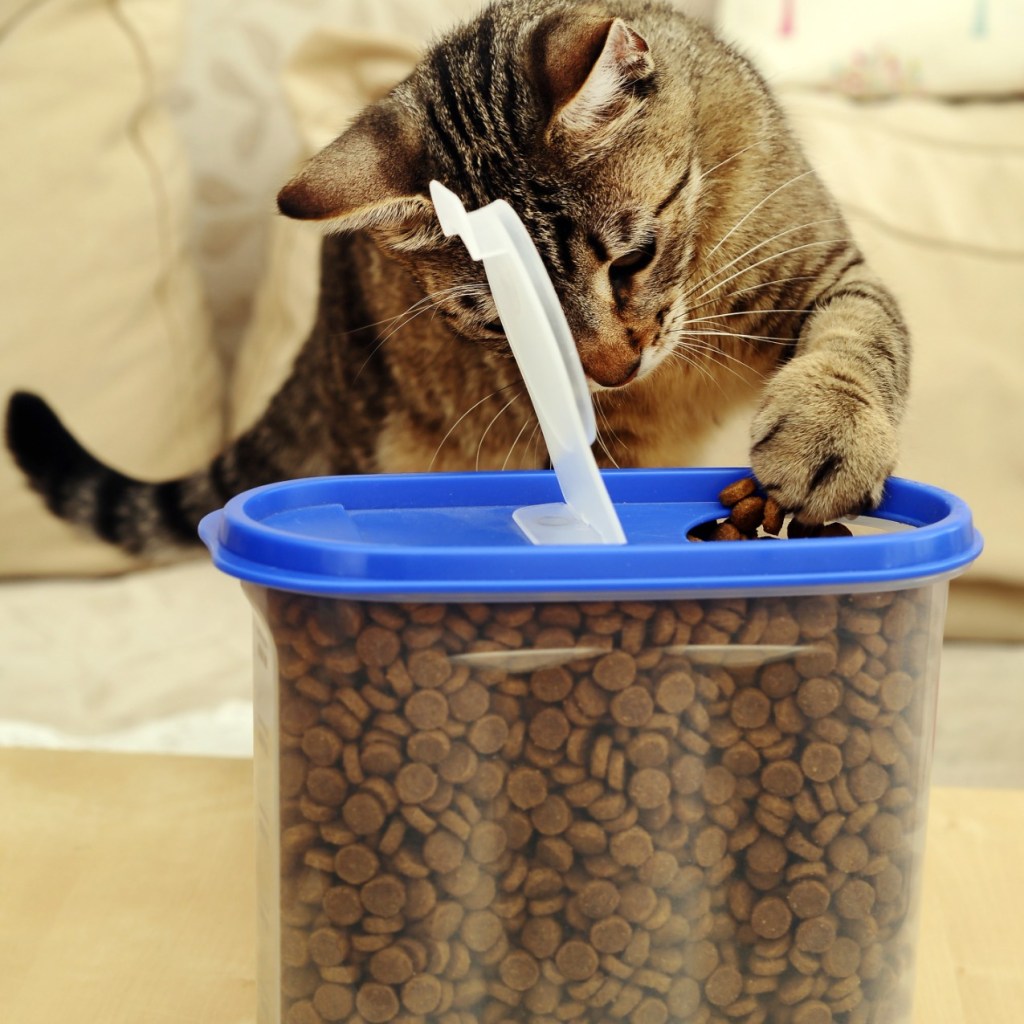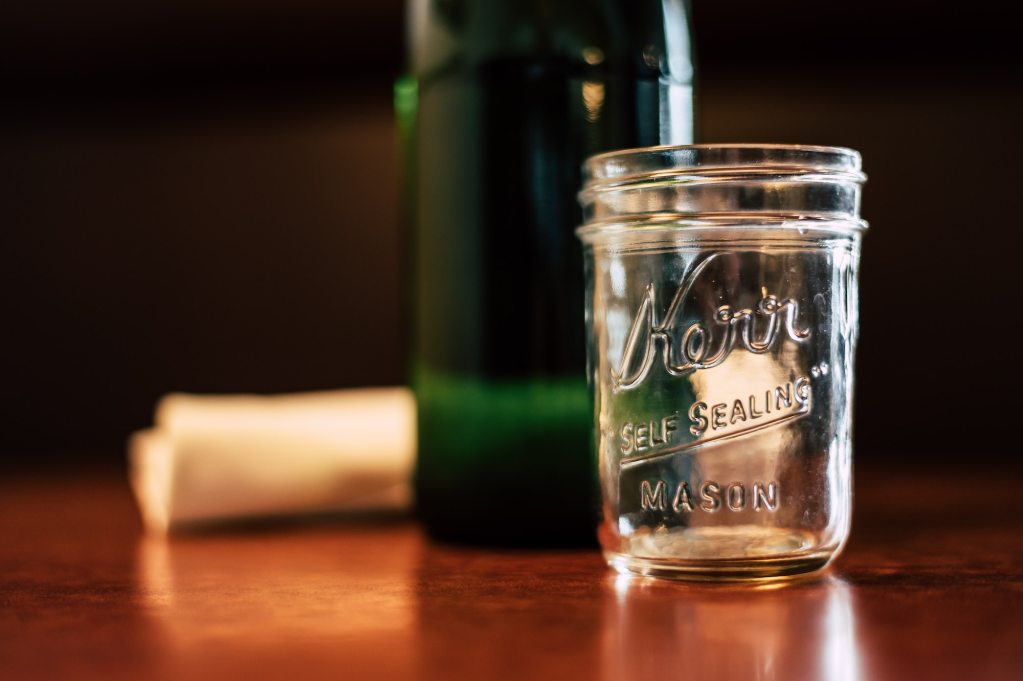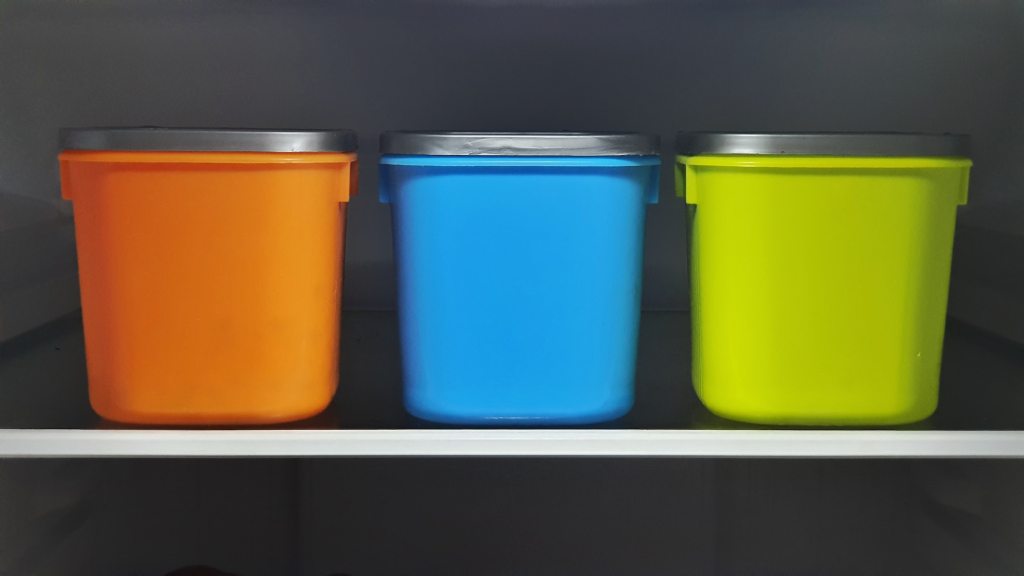Storing dry cat food and keeping it fresh and tasty can be difficult, especially when their food comes in oversized bags and cans, leaving you stuck with the leftovers. Rather than giving in to the frustrations, explore your options. There are a lot of creative and easy tips that will make you a food-storing pro. Check out efficient cat food storage solutions that will help keep it not only organized but also fresh.
Keep it closed

Many dry cat foods come in resealable bags, allowing you to keep it fresh by zipping it back up after use. While it can be easy to leave the bag open or slightly ajar when you’re in a rush, it is important to take the time to properly close it. By doing so, you’ll save yourself money and save your cat from eating stale, unappetizing, dry food.
Even the slightest opening in a resealable bag can expose your cat’s food to bugs, dust, dirt, and air, causing all kinds of things to settle and grow inside. Oftentimes, pet food bags offer low-quality zippers, so if your cat’s resealable food bag is one that has very poor zipping ability, it may be best to check out some of the more airtight options below.
Freezer bags for the win
You can’t go wrong with a box of high-quality zipper bags when it comes to secure food storage. These bags can be utilized for your cat’s wet and dry food, making it a quick storage option for anyone who feeds their cat both types.
When it comes to dry food, it is as simple as pouring the food into the freezer bag, zipping it up, and leaving it in your pantry until further use. If you feed your cat wet food, but oftentimes don’t use the entire can for one feeding, freezer bags can become one of your best storing options. You can purchase smaller-sized bags that will create the perfectly petite airtight space for your cat’s wet food.
Regardless of what type of food you store in freezer bags, they are perfect for labeling. Labeling becomes especially important when you have a lot of food to store. If you have a large bag of dry food, write the expiration date on all of the freezer bags before pouring the food into the bags. This will allow you to keep track of the dates, even months later, when you forget when you bought that bag of food.
Get creative with mason jars

A popular trend that continues to grow is to use mason jars as food storage. While many use it for dry foods like dry pasta, snacks, uncooked beans, and more, it can easily be used for dry pet food, too.
You can store your cat’s dry food in mason jars for durable, strong, airtight storage. You can even add some of your cat’s favorite dry treats to another mason jar to keep them fresh and tasty.
Try some fancy automatic feeders
Automatic pet feeders are becoming all the craze lately with creative features, endless options, and undeniably easy convenience. This option is perfect for any cat parents with busy or unpredictable schedules. It will ensure that your cat is fed delicious, fresh food at the same time every single day.
Pretty much all automatic pet feeders offer airtight storage for your cat’s food, so it is as simple as pouring in the food and letting the feeder do all the work.
Designate some Tupperware for your cat

Everyone has a cabinet overflowing with endless Tupperware, so assigning a few to your cat’s food is no big deal. Tupperware can be used for both dry and wet food, making it a great, versatile option. Whether you have leftover wet food that you’ll be using later that day or a pound of dry food that will last your cat weeks, just pour it into some Tupperware and close it up for super simple storage.
Keep the expiration date in mind
The best way to ensure your cat is enjoying fresh food is to keep the expiration date in mind. If you choose to transfer your cat’s food to another type of container, it is important to label it with its expiration date. It can be as simple as writing directly on the container or using some tape and a permanent marker. Regardless of which one of these methods you find the most helpful, you’ll have your cat’s food staying organized and fresh for years to come.
When it comes to storing any kind of food, it really comes down to keeping it airtight, organized, and labeled. These key tips are a fool-proof way to take all the fuss out of cat food storage. You’ll enjoy how much more organized your cat’s food will become. Keeping it fresh and tasty for your cat will ensure that even the pickiest of cats can’t resist.


